Biomes and ecosystems
Biomes and ecosystems is a travel topic describing different types of biomes and ecosystems and where you can find them.
.svg.png)
Understand
Climates
Around the world, there are various biomes with vegetation that depends on the climate patterns of the region. For example, wet regions around the equator are tropical rainforests, and dry regions farther from the equator are deserts. There are some basic types of climates, found in various regions of the world:
- Tropical: Warm/hot and often wet. This is what you get in tropical rainforests and most of the tropics region in general. Most places near the equator (like the northern part of South America, Central America, parts of Southeast Asia, some of Africa, etc.) have this kind of climate.
- Dry: Low precipitation. This is what you get in deserts. Usually, deserts have low populations because water is necessary for survival. They're found in northern Africa, southern Africa, Australia, and many other places; a list of deserts can be found in the article about deserts.
- Temperate: Not exceptionally hot or exceptionally cold, but with a range of temperatures over the course of the year and distinct seasons. Britain is a good example, along with New Zealand and much of the Mediterranean.
- Continental: Cold winters and hot summers, and moderate precipitation. This type of climate occurs in much of Canada, Russia, Eastern Europe, northern China, and the northern United States.
- Polar: Dry and bone-chillingly cold. These places have low populations, or no people at all. For example, Antarctica and most of Greenland. These regions are often covered with ice sheets.
Climates vary over long periods of time, and major natural disasters can influence them for shorter periods (see Wikipedia's article about Krakatoa). Well-known periods of climate change include the Medieval Warm Period that occurred during the Middle Ages and the "Little Ice Age" at the end of the Middle Ages.
Biomes
Biomes are large regions that have similar climates, flora, and fauna. To divide the world into a few ecological zones is a difficult attempt, notably because of the small-scale variations that exist everywhere on earth and because of the gradual changeover from one biome to the other. Their boundaries must therefore be drawn arbitrarily and their characterization made according to the average conditions that predominate in them.
Ecosystems
Ecosystems are similar to biomes, but are more specific: they are a community made up of living organisms and nonliving components such as air, water, and mineral soil. Ecosystems can be studied in two different ways. They can be thought of as interdependent collections of plants and animals, or as structured systems and communities governed by general rules. The living (biotic) and non-living (abiotic) components interact through nutrient cycles and energy flows. Ecosystems include interactions among organisms, and between organisms and their environment. Ecosystems can be of any size but each ecosystem has a specific, limited space.
Ecoregions
Ecoregions are regions with similar endemic species. Most of them correlate with the world's continents, and include many different biomes and ecosystems:
- Eurasian wildlife in Europe, northern Asia and north Africa
- African wildlife in sub-Saharan Africa
- South Asian wildlife in south and southeast Asia
- Australasian wildlife in Australia and New Zealand
- North American wildlife in most of North America
- South American wildlife in Central and South America
Prepare
Whenever you're traveling to a destination, you should check both the weather and the climate (and therefore, to some extent, the biome) of where you're visiting. The weather is easy to check — make sure there are not extremely cold temperatures, extremely high temperatures, or other forms of severe weather — before you visit simply by visiting a weather forecasting website like the Weather Channel, Weather Underground, or Accuweather. Climate information is not so easy to find; however, Wikivoyage provides graphs on many destination articles that show average high and low temperatures for each month in a particular city. For example, the climate data for New York City:
| Biomes and ecosystems | ||||||||||||||||||||||||||||||||||||||||||||||||||||||||||||
|---|---|---|---|---|---|---|---|---|---|---|---|---|---|---|---|---|---|---|---|---|---|---|---|---|---|---|---|---|---|---|---|---|---|---|---|---|---|---|---|---|---|---|---|---|---|---|---|---|---|---|---|---|---|---|---|---|---|---|---|---|
| Climate chart (explanation) | ||||||||||||||||||||||||||||||||||||||||||||||||||||||||||||
| ||||||||||||||||||||||||||||||||||||||||||||||||||||||||||||
| ||||||||||||||||||||||||||||||||||||||||||||||||||||||||||||
As an example, it may be worth reconsidering a visit to New York City in January due to the cold weather experienced there during that month. But don't just focus on climates and forget the weather — as a quote attributed to Mark Twain goes, "Climate is what we expect. Weather is what we get."
Biomes
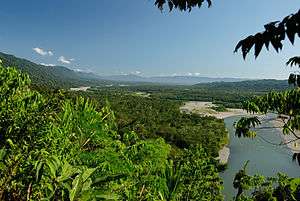
Tropical rainforest
- See also: Tropics, Central Africa, Southeast Asia, Amazonia
These regions are characterized by continual humid heat, dense jungle, heavy rainfall, a lot of rivers, and for the most part low-density population. They can be found close to the equator, particularly in Brazil, Central Africa, Malaysia, and Indonesia, but are shrinking in area due to the intense logging rate that occurs in Brazil.
Subtropical rainforest
The farther you go away from the equator, the more temperature variations occur between summer and winter. While temperature variations between the seasons are still not very large around 20° to 30° north, the variations are enough to create a slight change in the climate and flora and fauna. For example, while there is still a lot of rainfall, the amount of rainfall in a subtropical region is not as much as would be expected in somewhere like the Democratic Republic of the Congo. Also, flora in a subtropical region more closely resembles a temperate forest than a tropical rainforest would.
Desert
- See also: Arid region safety, Northern Africa, Southwestern United States, much of Mexico, Middle East, much of Australia, Southern Africa, and much of Central Asia
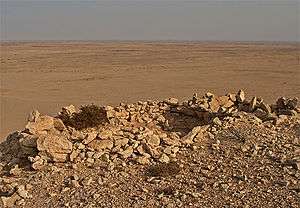 Sahara Desert
Sahara Desert
Deserts are dry regions where relatively little vegetation occurs, and they generally consist of either sand dunes or rock formations. They can reach temperatures higher than those in the tropical and subtropical regions but the lack of humidity makes desert heat not quite as unbearable; while in a tropical climate 90 °F (32 °C) is unbearable, in a desert climate to reach the same unbearable heat the temperature has to be about 100 °F (38 °C).
High-elevation desert
- See also: Arid region safety, Cold weather, Tibet, Nevada, and parts of other Western states
In high-elevation deserts, the amount of precipitation is slightly higher than what would be experienced in a desert because the high elevation captures more precipitation. Also to do with the higher elevation, the temperature is colder year-round than most deserts would be. High deserts are often farther north than ordinary deserts, intensifying the possibilities of extreme cold during the winter.
Mediterranean
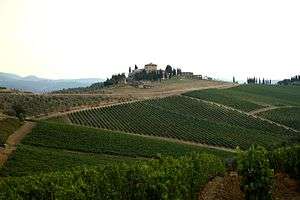
- See also: parts of California, Southern Europe, central and northern Israel, South Africa, Lebanon, and Turkey, and parts of North Africa
These areas can be quite varying in their vegetation, but are generally brought together by their climate, which consists of fairly cool winters and hot summers, with most of the rainfall occurring in winter. Generally, regions are Mediterranean if vineyards can survive in them. Population densities are usually quite high in these regions because, while temperatures can get hot in summer, the overall climate is reasonable compared to that of deserts or tropical regions.
Temperate
- See also: Canada, much of the United States, Europe, Russia, Central Asia and northern East Asia, New Zealand, Patagonia
Temperate climates are common in the Northern Hemisphere, and temperate regions are characterized by four seasons; spring, summer, autumn and winter. Differences in precipitation are not as pronounced around the year and during the winter snow is possible or even expected in much of the temperate zone. Plants are growing only for a part of the year, though the temperate zone furthest away from the equator (and at high altitudes elsewhere) is dominated by boreal forest which is green around the year.
Grassland
Grasslands go by various names in different parts of the world, varying from the savanna in Africa to the prairie of the Midwestern United States. Trees are rare in grasslands, but farming is fairly common.
Forest
Many temperate forests, unlike tropical forests, have to endure cold weather in winter but rarely extreme heat, even in summer. They occur in northern areas, south of the tundra, and certain high-elevation areas farther south.
Tundra
- See also: Cold weather, far northern parts of Canada, Alaska, Nordic countries and Russia as well as Subantarctic Islands
On the tundra the vegetation is low, dominated by mosses, grasses and shrubs, or even lichen. Temperatures vary from cool in the summer to cold or extremely cold for the rest of the year. In mid-summer the sun doesn't set for several weeks or months, and correspondingly in the winter it doesn't rise for a similar period. Human population densities are low, with very few cities, but the summer can see quite lively animal life, especially migrating birds.
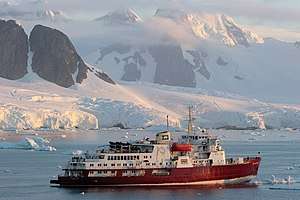
Arctic/Antarctic
- See also: Cold weather
Permanently covered in snow and ice, there's zero vegetation in the Arctic and Antarctic, and only a few animals. Human habitation is limited to research stations, where crew and supplies are flown in and out. Temperatures rarely if ever raise above freezing, and in the winter temperatures below -50°C (-60°F) aren't unheard of in the Arctic and coastal Antarctica. In inland Antarctica, such temperatures are guaranteed. In the summer the sun is up all day and night, and in the winter the sun doesn't rise at all. At the poles, the sun rises above the horizon at the spring equinox, and drops below it at the autumn equinox.
Everywhere in Antarctica is cold and dry, with the exception of some Subantarctic Islands. As a result, Antarctica has a population which consists of scientists who do not settle in Antarctica permanently. Antarctica's climate means that its land is useless for agricultural purposes.
See
Regions
The section below lists regions of the Earth (like particular deserts, etc.) where you can find a certain type of biome. For specific destinations, please see the destination section, which comes after this one.
Tropical
- 🌍 Amazon Rainforest (Amazonia — much of Brazil but also the eastern parts of Peru and Bolivia as demonstrated by the picture at the beginning of the Biomes section). The main rainforest in the world, it is now threatened by the Brazilian logging industry. The Amazon Rainforest is also home to a great number of rivers, including primarily the Amazon but many of that river's tributaries as well.
- 🌍 Central African Rainforest. Like the Indonesian Rainforest, the Central African Rainforest is the location of apes, in particular the gorilla and chimpanzee. The makes it a destination for some tourists despite the dangers of venturing into the jungle.
- 🌍 Southeast Asian Rainforest. Southeast Asia, along with Oceania and some of Queensland in Australia, is another rainforest region. Indonesia is where you can find the orangutan ape.
Sub-tropical
- 🌍 Florida (Southern United States). All of this state is low-lying and extends farther south than Alabama, Mississippi, and Louisiana — the states to the west. Therefore, Florida is one of the most tropical regions of the contiguous United States, and experiences a hot, humid climate in summer.
Desert
- 🌍 Mojave Desert (Southwestern United States). This desert is known for the cactus plants that grow there.
- 🌍 Sahara (Northern Africa). This is an extremely large desert covering the northern part of Africa; in it are several countries, along with the Bir Tawil region that is not claimed by any country in the world.
High-elevation desert
- 🌍 Great Basin (Much of the interior of the American West). Much of the American West is a high plateau with scattered mountain ridges. Most of the trees are at higher elevations in the mountain ranges, with the lowest valleys of the basin being very desert-like. It can be crossed by taking the Loneliest Road in America.
- 🌍 Tibet (North of the Himalaya mountain range and in the western part of China). Tibet rests at a much higher elevation than much of the Great Basin. However, there are similarities between the two regions; particularly the mountain ranges that are scattered throughout both of them. Tibet is the dry side of the Himalayas; on the other side of Earth's highest mountain range, in India, the climate is generally much wetter.
Grassland
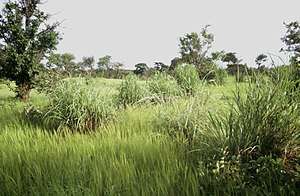
- 🌍 African Savanna (Parts of Central Africa). There are a couple different regions of savanna in Africa, some with more trees and some with fewer trees depending on their geographic region. The Sahel, a belt of drier grasslands and acacia savannas, lies to the north, between the Sudanian Savanna and the Sahara Desert. To the south the forest-savanna mosaic is a transition zone between the Sudanian Savanna and the Guinean moist forests and Congolian forests that lie nearer the equator. The Sudanian Savanna is a broad belt of tropical savanna that runs east and west across the African continent, from the Atlantic Ocean in the west to the western lowlands in the east.
- 🌍 American Prairie (East of the Rocky Mountains). The American Prairie is a very flat, grassy area with few interruptions — however, Theodore Roosevelt National Park, the Badlands, the Black Hills, and some scattered buttes interrupt the largely flat landscape.
- 🌍 Eurasian Steppe. This ecoregion, also known as the Great Steppe or the steppes, is in the temperate grasslands, savannas, and shrublands biome. It stretches across a large area that goes from Romania to Manchuria, and is contiguous with the exception of an isolated steppe around Hungary.
Temperate forest
- 🌍 Russian Taiga. Much of Russia — a huge land area, that is — is forested. However, the forests in this region face some of the coldest temperatures reached on Earth, particularly in the Russian Far East, during the winter. There are a few cities, like Yakutsk, but the overall population density is low. Even though this region is beautiful, there are so many risks involved with visiting, like the loneliness, cold weather, and dangerous animals that mean it's best avoided by travelers. The taiga also continues west all the way to the Atlantic Ocean, and you can find similar forests in the Nordic countries, but they are easier and safer to explore with better transport infrastructure, communication network coverage and shorter distances between cities and towns (still long compared to e.g. Central Europe).
- 🌍 Canadian Shield. This region is fairly similar to the Russian taiga — it, too, is a huge land area that gets extremely cold weather and poor road connections. The population of the Canadian Shield is even less than the Russian Taiga's population, however.
- 🌍 European forests. Except for the northernmost and southernmost parts of the continent, Europe's forests are in general temperate broad-leaf forests with trees such as beech, elm, maple and oak. The trees drop their leaves in the autumn, and new leaves appear in the spring giving the forests a completely different appearance depending on the season. Similar forests are also prevalent for instance in southern parts of Canada, and some parts of the United States and East Asia.
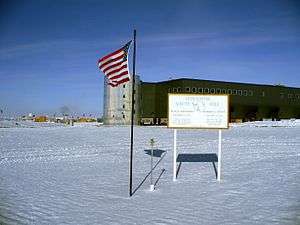
Tundra
- 🌍 Many Subantarctic Islands. There are a surprising number of fairly large islands south of Oceania, Africa, and near the southern tip of South America. These islands resemble Iceland and the Faeroe Islands, but have little or no population. They vary from more habitable islands like the Falklands to the cold South Georgia Island.
- 🌍 North Slope Borough, Alaska (Take the Dalton Highway north from Fairbanks). Long, sloping plain with a lot of oil and not much else. The main community is Barrow, which has only a few thousand inhabitants.
- 🌍 Northern Russia. North of Russia's taiga landscape begins to look much more Arctic, culminating in desert-like landscapes on the islands of the Arctic Ocean that belong to Russia.
Arctic/Antarctic
- 🌍 Greenland. While Greenland does actually have some farming country and rivers, most of the island (especially the interior) consists of a gigantic ice shield. There is practically no population on the ice shield, and getting to it is no easy experience either.
- 🌍 Antarctica. The coldest place on Earth, due to a combination of factors including the elevation of its great Antarctic Plateau. With the exception of a few of the Antarctic Islands, bases and research stations are few and far between.
Destinations
The following are specific locations that showcase the scenery of each biome. For information about larger areas associated with a particular biome, please see the regions section above.
Tropical
Sub-tropical
- 🌍 Everglades (Southern Florida, west of Miami). This park is known for its alligators but is also a large, protected area for the typical subtropical/tropical flora.
- 🌍 Okefenokee Swamp (Southern Georgia).
Desert
- 🌍 Bir Tawil (Between Sudan and Egypt). This desert region is between Egypt and Sudan, and no country wants the land. Therefore, many individuals have claimed it an given it various names, such as the "Kingdom of North Sudan".
- 🌍 Guadalupe Island (West of Baja California). This island, which is one of Earth's most remote places, has largely desert landscape, although there are small woodlands scattered at the island's higher elevations. The great cliffs on the island are also extremely high, reaching at their highest point a few thousand feet.
High desert
- 🌍 Monument Valley (Arizona and Utah). The "typical" Western scene featured in most Western movies. Even though much of the West does not closely resemble Monument Valley, its rock formations have become famous around the world. The place itself is inside the Navajo Nation.
- 🌍 Humboldt-Toiyabe National Forest (Scattered regions of the American West, some of which is in Nevada). This national forest includes many juniper woodlands. While this may not be considered desert, the only reason it is not desert is the high elevation. The valleys below show that the region would normally be much drier if it was not placed to catch the rain.
Grassland
- 🌍 Grasslands National Park (Saskatchewan). Grasslands National Park is a Canadian national park located near the village of Val Marie, Saskatchewan, and one of 44 national parks and park reserves in Canada's national park system (though one of only two in Saskatchewan itself). This national park is north from the American state of Montana and lies adjacent to the international boundary.
Temperate forest
- 🌍 King's Canyon National Park/Sequoia National Park (Sierra Nevada mountain range in California).
- Beech Forests of Europe. Much of Europe that's not cultivated or urbanized is made up of different temperate broad-leaf forests, including beech forests. This natural world heritage site is composed of 78 beech forests around the continent.
- 🌍 Białowieża/Belovezhskaya Forest. Shared by Poland and Belarus, this is the last remnant of the primeval broadleaf forest that once covered most of temperate Europe.
Tundra
- 🌍 Bering Land Bridge National Preserve (Between Russia and Alaska). This park is close to the Bering Strait and therefore is not far from Little Diomede (see below listing).
- 🌍 Little Diomede (Between Russia and Alaska). An island with a very small population. It is notable because it marks the western end of North America.
Arctic/Antarctic
- 🌍 Northeast Greenland National Park. A gigantic national park, but it is extremely — emphasis on extremely — remote.
- South Pole. The southernmost point on Earth, and also one of the loneliest places on the planet.
Multiple biomes
- 🌍 The Grand Canyon. This is one of the deepest canyons in the world, and consequently there are significant differences between the vegetation at the top of the canyon and the vegetation at the bottom. Information about how the different elevations in the canyon affect plant life can be found on the United States National Parks website.
Stay safe
Weather
Biomes have varying climates and terrain; therefore, biomes have varying weather-related dangers. For example, cold weather is not a concern in Brazil, but in the Yukon it is. Take a biome's climate into consideration before visiting a place, especially if you plan to do a lot of outdoor activities on your vacation.
Generally, you should visit places within the tropical, subtropical, and desert biomes in winter; Mediterranean, grassland, and high desert biomes in either spring or fall; and temperate forest, tundra, and Arctic/Antarctic biomes in summer. However, Earth is such a large planet with so many different climate types, land formations, and natural disasters that you must check a destination's general climate and weather conditions before visiting and not rely solely upon the above generalization.
Wildlife
Not only do different biomes have varying climates, but they also have varying wildlife. Viewing wildlife is an important and exciting reason to travel to other biomes; however, different wildlife means that on your journey to another biome you will encounter flora and fauna, probably some of them dangerous, that you have never been in contact with before. Below are some examples of dangerous fauna that can be encountered in different biomes:
- Bears: temperate forest (black bears and grizzly bears), tundra (grizzly bears and polar bears), Arctic (polar bears)
- Lions, but not mountain lions: African savanna
- Leopards: Old World tropical
- Tigers: largely tropical; however, there are also Siberian tigers, which are far from tropical creatures
Respect
Endangered animals
- See also: Animal ethics
While oak trees or ladybugs may be common in your neighborhood and each individual living thing might not seem very important, in many biomes there are animals which are severely threatened due to loss of their habitat (often due to development), poaching, or because they have always lived in small numbers. When people interfere with species that would naturally exist in small numbers, there is a high risk of the species dying out completely. Once a species dies out, other species can be put at risk as well, and a domino effect can then occur that results in the complete destruction of an ecosystem. Fortunately, this has not occurred in nature yet, but with human populations continually rising and therefore high consumption rates of food, water, plastics, etc., the risk of habitat destruction (particularly in less developed countries) increases with time unless people travel responsibly.